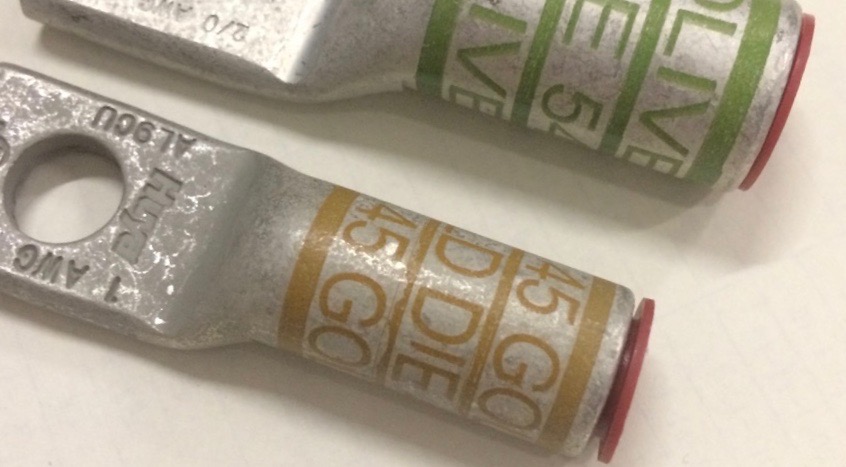FAQ Questions
Background
1 - What does CUAL mean?
2 - What does "Dual-rated" mean?
3 - What is the purpose of oxide-inhibitor compound?
Many years ago, both wire and terminals were manufactured only of wrought copper or cast high-copper alloy bronze.
When aluminum came into use, both for wire and connectors, new manufacturing processes and performance capabilities came into the picture. But with aluminum, several new factors affect connector performance... thermal expansion/contraction, surface oxide, corrosion resistance, and economics.
Because of thermal expansion/contraction characteristics of aluminum vs copper, an aluminum connector can be used on either copper or aluminum wire. In other words, aluminum can be "dual-rated" for use on either wire material. However, copper/bronze connectors cannot (in general) be used on aluminum wire.
By itself, the surface of aluminum quickly forms a non-conductive oxide layer (aluminum oxide is a ceramic-like insulating material), so most aluminum connectors are tin-plated during manufacturing to prevent the surface oxide.
Before connecting, aluminum wire should be scraped clean to remove surface oxide, then immediately coated with oxide-inhibitor compound before insertion into the connector. Most dual-rated connectors are tin-plated and pre-loaded with oxide-inhibitor.
Answers
1 - In general, only aluminum connectors should be used on aluminum wire. Dual-rated connectors can be used either on aluminum (AL) or copper (CU) wire. CUAL or ALCU means "dual-rated". .
AL7CU is rated for a 75oC system.
AL9CU is rated for a 90oC system.
2 - In general, "dual-rated" means that a connector is suitable for use on either aluminum or copper wire. This typically refers to connectors made of aluminum
3 - The purpose of oxide-inhibitor compounds is to protect the joint from oxygen and moisture to prevent formation of surface oxide on aluminum wire and connectors. (Tin- plating during manufacturing prevents the formation of surface-oxide on aluminum during storage.) During installation, the metals are compressed together and the aluminum surfaces are reformed; the oxide-inhibitor prevents subsequent surface-oxide formation. Some oxide-inhibitor compounds also contain metal particles, which help to abrade the connector surfaces during compression, and also help to create electrical paths.


